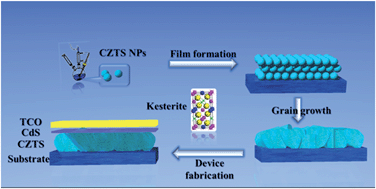Cu2ZnSn(S,Se)4 (CZTSSe) has received considerable attention as a material capable of driving the development of low-cost and high performance photovoltaics. Its high absorption coefficient, optimal band gap, and non-toxic, naturally abundant elemental constituents give it a number of advantages over most thin film absorber materials. In this manuscript, we discuss the current status of CZTSSe photovoltaics, and provide a comprehensive review of Cu2ZnSnS4 (CZTS) and Cu2ZnSnSe4 (CZTSe) nanocrystal (NCs)-based fabrication methods and solar cell characteristics. The focus will be on the relevant synthetic chemistry, film deposition, and the production of high efficiency photovoltaic devices. Various colloidal synthesis routes are currently used to form the highest quality CZTSSe film from the nanocrystals with controllable phase, size, shape, composition, and surface ligands. A variety of recipes are summarized for producing nanocrystal inks that are appropriate for forming CZTSSe absorber materials with a wide range of controllable optoelectronic properties. Deposition and post-processing, such as annealing and selenization treatments, play an important role in defining the phase and structure of the resulting material. Various film treatment strategies are outlined here, and their resulting material quality, device performance, and dominant photovoltaic loss mechanisms are discussed. Suggestions regarding needed improvements and future research directions are provided based on the current field of available literature.


 Please wait while we load your content...
Please wait while we load your content...